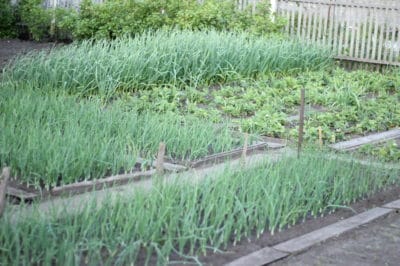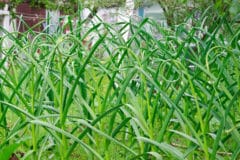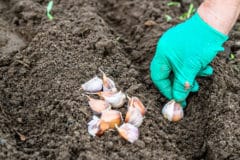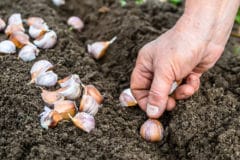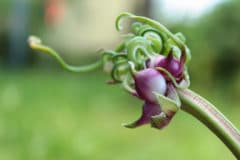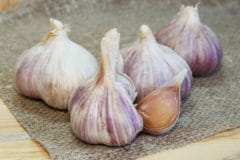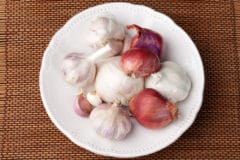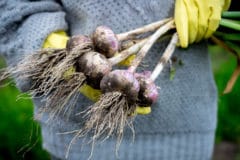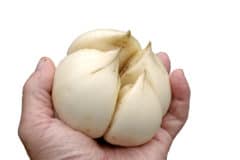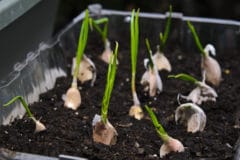What is Garlic?
Although many people don’t think of it that way, garlic – sometimes called the “stinking rose” – is actually an edible flowering bulb. It evolved in cold climates and often does better if planted in late fall, especially the hardneck varieties. The scapes (immature flower stalks) of hardneck garlic and the cloves of both kinds are edible, and can be stored for several months to a year.
Growing Conditions
Garlic likes highly fertile soil, plenty of soil moisture and good drainage. However, you must cut back and then stop watering once the cloves begin to develop to promote better development. You should choose companion plants that like similar conditions. You can also plant garlic among fruit trees (you probably won’t harvest good cloves), in which case the garlic will adapt to the orchard conditions.
Companion Plants
An allium, garlic does well with plants that make good companions for onions, shallots and leeks. Garlic can be planted with the following:
- Solanums, which includes tomatoes, eggplant, peppers and potatoes
- Cole crops such as broccoli, cauliflower, kale and kohlrabi
- Carrots
- All fruit trees
However, garlic may impair the growth of these plants:
- Beans
- Peas
Plan Ahead
Garlic is often planted in late fall, while many of its companions are planted in spring. You can plant garlic in rows and interplant between the rows or plan for companions in between the garlic plants. For example, you might plant garlic in a circle in late fall, then place a tomato transplant in the center of the ring after the weather warms up in spring.
Garlic for Insect Protection
If you grow strawberries, you might like to know that garlic can help reduce spider mite infestations in strawberries. Planting double rows of garlic between strawberry rows can significantly reduce spider mites. Garlic has also been found to deter the diamondback moth and cabbage worms when interplanted with cabbage. Planting garlic among roses helps deter aphids.
Herbs and Flowers
A number of herbs and flowers do well when interplanted with garlic. Garlic repels spider mites from dill, while rue deters root maggots that would attack the garlic. Chamomile seems to improve garlic’s flavor. Yarrow and summer savory can promote garlic health and production. Planting garlic with nasturtiums, marigolds, geraniums and petunia can repel a variety of pests in the garden.
